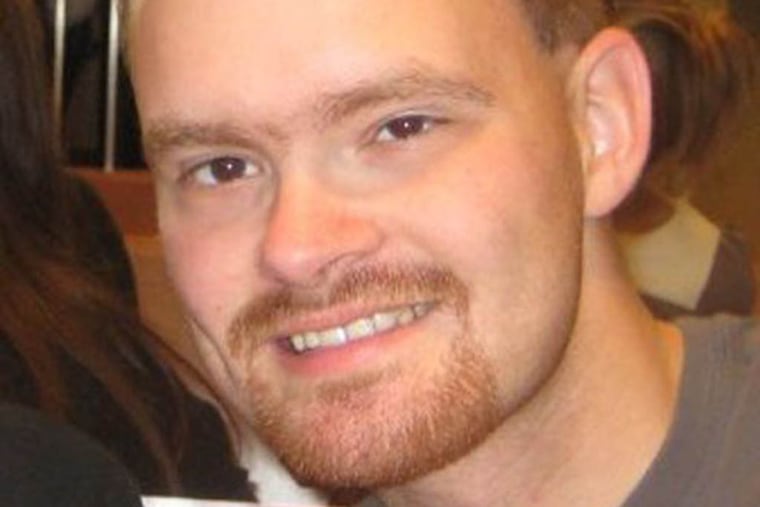For Train 188 engineer, a solitary but dream job
A locomotive with more than 8,000 horsepower, tugging cars carrying more than 200 people - and one man to keep it all on the tracks.

A locomotive with more than 8,000 horsepower, tugging cars carrying more than 200 people - and one man to keep it all on the tracks.
On the night of Tuesday's fatal accident, that man was Brandon Bostian, a train enthusiast most of his life, an Amtrak employee for a decade, and an engineer since 2010.
Bostian, 32, has remained publicly silent since the derailment of Train 188, but more details about him and his experience trickled out Friday. What also emerged was a fuller portrait of the largely solitary job that he and other engineers are entrusted to do.
The training typically consists of at least six to 12 months of study and field work. Once ready, engineers can be called to work with only a few hours' notice. On routes shorter than 12 hours, they work alone, overseeing a control panel that requires constant monitoring and adjustment.
"There is no automation," said Paul Pokrowka, legislative director for the Sheet Metal, Air, Rail and Transportation Union, and for 15 years an engineer on freight trains. "It's 100 percent - from the time you start to the time you stop. You're constantly doing something."
At a news conference Friday, Robert Sumwalt of the National Transportation Safety Board said Bostian had willingly cooperated with investigators. In a 90-minute interview, he told them did not feel sick or tired before Train 188 derailed.
Though he began working the Washington-New York route only a few weeks ago, Bostian appeared to know his duties and his 215,500-pound locomotive, an Amtrak Cities Sprinter 64, Sumwalt said.
An NTSB investigator said that Bostian's train had some "technical problems" on the southbound leg of the route that delayed its arrival in Washington by about 30 minutes. Citing an unnamed source, one news outlet reported that the delay shortened Bostian's break between trips and may have left him "frazzled."
But NTSB spokesman Peter Knudson said late Friday that the engineer "expressed no operational problems, any sort of significant problems with the train. He said he felt fine; there was no issue. If he would have felt rushed or stressed, that would certainly have" come out.
Bostian remembered ringing the train bell as he passed through the North Philadelphia station, Sumwalt said, but the derailment itself was a blank.
"He was in shock," James Weir, a friend who said he talked to Bostian after the crash, recalled in an interview Friday. "You could kind of tell he was only half there. He told me that he just didn't know what happened and that he was trying to figure it out."
Not knowing what happened on board was unusual for him. Bostian was a train fanatic and cherished his job, according to friends. "I don't know of anyone that loves Amtrak or trains more than Brandon," said Weir, who met Bostian when the two were teens.
Bostian graduated from Bartlett High School, outside Memphis, in 2001 and studied journalism for a time at the University of Missouri-Columbia before turning to accounting.
But the rails remained his first love, Weir said. To live in New York and be an Amtrak engineer was a dream.
Another friend and former Amtrak employee, Rafi Guroian of Baltimore, described Bostian's "enthusiasm for spreading the good word about train travel."
Bostian appeared to have been a regular contributor to a forum for train enthusiasts, where he posted his concerns about safety precautions on the rails and displayed an encyclopedic knowledge of railroad operations.
"He'd always fuss at me for driving five to 10 m.p.h. over the speed limit," Weir said. "We didn't get anywhere fast when he drove."
The engineer of an ACS-64 like the one he controlled Tuesday night faces a control panel with a throttle that has eight settings, Pokrowka said, as well as three types of brakes and gauges to monitor, plus the terrain to watch.
"You get to understand a feeling for the train - as big as it is and as heavy as it is, you can actually feel what it's doing," he said.
Amtrak's policy of staffing trains with one engineer on routes under 12 hours drew heated emotions from industry watchers.
"He's up there by himself, and I would certainly want someone up there in the cab with me," said Charles Culver, a railroad consultant from Texas.
Others, though, believe having more than one person in the cab can lead to distraction.
Amtrak did not respond to requests for comment about the job of an engineer.
Weir said he had not spoken with Bostian since a Tuesday night call from the emergency room - the engineer suffered a concussion and deep cuts to his face. But he said he has been in close contact with his friend's parents.
"They said that he's heartbroken," Weir said. "Several times a day for multiple days, they have said they want closure for everyone involved, but they don't want people to rush to judgment."
INSIDE
Responders encountered shattered metal and wounded passengers. A4.
Booker and Menendez seek funds for rail safety. A5.
EndText
610-313-8114 @jasmlaughlin
Inquirer staff writers Jonathan Lai and Nancy Albritton contributed to this article.